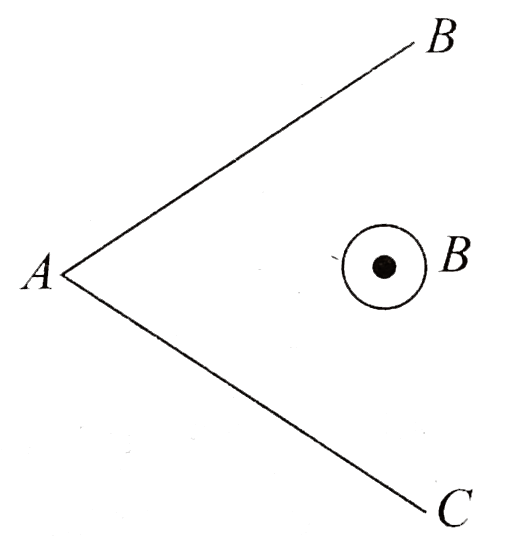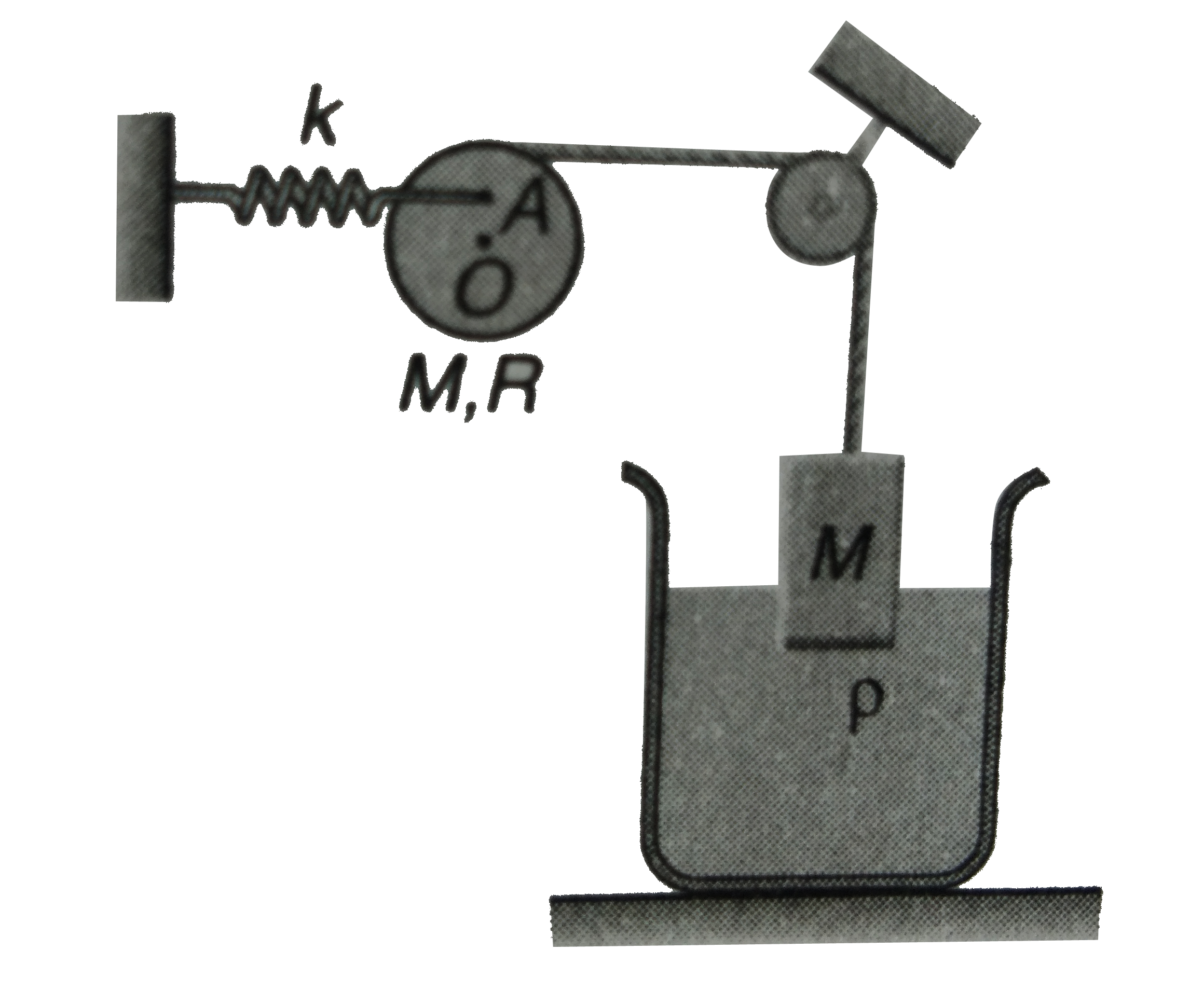A: Urine, faeces and gametes pass through a common passage in frog.
R: Frog have cloaca in which alimentary canal and urinogenital ducts open.
IF both assertion & Reason are true and the rason is the correct explanation of the assertion
If both assertion & reason are true but the reason is not the correct explanation of the assertion, then mark
If assertion is true statement but reason is false, then mark
if both assertion and reason are false statement
The correct Answer is:B
To solve the assertion-reason question regarding frogs, we will analyze both statements step by step.
1. Understanding the Assertion (A):
- The assertion states that "Urine, faeces, and gametes pass through a common passage in frogs."
- This is true because frogs have a structure called the cloaca, which serves as a common exit point for waste products and reproductive materials.
2. Understanding the Reason (R):
- The reason states that "Frogs have a cloaca in which the alimentary canal and urinogenital ducts open."
- This is also true. The cloaca is indeed the structure where the digestive (alimentary) canal and the urinogenital ducts converge.
3. Connecting Assertion and Reason:
- While both the assertion and reason are true, we need to determine if the reason correctly explains the assertion.
- The assertion explains the fact that urine, feces, and gametes share a common passage, while the reason describes the anatomical structure (cloaca) that allows this to happen.
4. Conclusion:
- Since both statements are true, but the reason does not directly explain why urine, feces, and gametes pass through a common passage, we conclude that:
- Both A and R are true, but R is not the correct explanation for A.
Final Answer:
- Both assertion and reason are true, but the reason is not the correct explanation for the assertion.
- The assertion states that "Urine, faeces, and gametes pass through a common passage in frogs."
- This is true because frogs have a structure called the cloaca, which serves as a common exit point for waste products and reproductive materials.
- The reason states that "Frogs have a cloaca in which the alimentary canal and urinogenital ducts open."
- This is also true. The cloaca is indeed the structure where the digestive (alimentary) canal and the urinogenital ducts converge.
- While both the assertion and reason are true, we need to determine if the reason correctly explains the assertion.
- The assertion explains the fact that urine, feces, and gametes share a common passage, while the reason describes the anatomical structure (cloaca) that allows this to happen.
- Since both statements are true, but the reason does not directly explain why urine, feces, and gametes pass through a common passage, we conclude that:
- Both A and R are true, but R is not the correct explanation for A.
- Both assertion and reason are true, but the reason is not the correct explanation for the assertion.
Topper's Solved these Questions
- ANIMAL KINGDOM (CHORDATES) BOOK - AAKASH INSTITUTE ENGLISHCHAPTER - ANIMAL KINGDOM (CHORDATES) EXERCISE - Assignment (Section-C)
47 Videos
- ANATOMY OF FLOWERING PLANTS BOOK - AAKASH INSTITUTE ENGLISHCHAPTER - ANATOMY OF FLOWERING PLANTS EXERCISE - Section D Assertion-Reason Type Questions
10 Videos
- ANIMAL KINGDOM (GENERAL ACCOUNTS & NON-CHORDATES)BOOK - AAKASH INSTITUTE ENGLISHCHAPTER - ANIMAL KINGDOM (GENERAL ACCOUNTS & NON-CHORDATES)EXERCISE - Assignment (Section-D)
10 Videos
Similar Questions
The ovaries in frog open into cloaca through
View SolutionThe existence of negatively charged particle in an atom was shown by J.J. Thomson as a result of the studies of the passage of electricity through gases at extremely low pressure known as discharge tube experiments. When a high voltage of the order of 10,000 volts or more was impressed across the electrodes, some sort of invisible rays moved from the negative electrode to the positive electrode these rays are called as cathode rays.

Cathode rays travel in straight path in absence of electrical and magnetic field . Cathode rays consist of material part and charged particles? Cathode rays produce X-rays and light is emitted when they strike on ZnS screen. Cathode rays penetrate through thin sheets of aluminium and other metals . They affect the photogenic plate and passes heating effect when they strike on metal foil. The raito of charge to mass i.e charge/mass is same for all the cathode rays irrespective of the gas used in the tube.
The existence of positively charged particle in an atom was shown be E. Goldstein. He repeated the same discharge tube experiments by using a perforated cathode. It was observed that when a high potential difference was applied between the electrodes, not only cathode rays were produced but also a new type of rays were produced simultaneoulsy from anode moving towards cathode and passes through the holes or canal of the cathode. These termed as canal rays or anode rays.
These rays travel in straight lines and consists of positively charged particles. These rays have kinetic energy and produces heating effect also. The e/m ratio of these rays is smaller than that of electrons. Unlike cathode rays, their e/m value is dependent upon the nature of the gas taken in the tube. These rays produced flashes of light on ZnS screen and can pass throughs thin metal foils. They can produce physical and chemical changes and are capable to produce ionisation in gases.
Which is not true with respect to cathode rays?
View SolutionThe existence of negatively charged particle in an atom was shown by J.J. Thomson as a result of the studies of the passage of electricity through gases at extremely low pressure known as discharge tube experiments. When a high voltage of the order of 10,000 volts or more was impressed across the electrodes, some sort of invisible rays moved from the negative electrode to the positive electrode these rays are called as cathode rays.

Cathode rays travel in straight path in absence of electrical and magnetic field . Cathode rays consist of material part and charged particles? Cathode rays produce X-rays and light is emitted when they strike on ZnS screen. Cathode rays penetrate through thin sheets of aluminium and other metals . They affect the photogenic plate and passes heating effect when they strike on metal foil. The raito of charge to mass i.e charge/mass is same for all the cathode rays irrespective of the gas used in the tube.
The existence of positively charged particle in an atom was shown be E. Goldstein. He repeated the same discharge tube experiments by using a perforated cathode. It was observed that when a high potential difference was applied between the electrodes, not only cathode rays were produced but also a new type of rays were produced simultaneoulsy from anode moving towards cathode and passes through the holes or canal of the cathode. These termed as canal rays or anode rays.
These rays travel in straight lines and consists of positively charged particles. These rays have kinetic energy and produces heating effect also. The e/m ratio of these rays is smaller than that of electrons. Unlike cathode rays, their e/m value is dependent upon the nature of the gas taken in the tube. These rays produced flashes of light on ZnS screen and can pass throughs thin metal foils. They can produce physical and chemical changes and are capable to produce ionisation in gases.
For cathode rays the value of e/m:
View SolutionThe existence of negatively charged particle in an atom was shown by J.J. Thomson as a result of the studies of the passage of electricity through gases at extremely low pressure known as discharge tube experiments. When a high voltage of the order of 10,000 volts or more was impressed across the electrodes, some sort of invisible rays moved from the negative electrode to the positive electrode these rays are called as cathode rays.

Cathode rays travel in straight path in absence of electrical and magnetic field . Cathode rays consist of material part and charged particles? Cathode rays produce X-rays and light is emitted when they strike on ZnS screen. Cathode rays penetrate through thin sheets of aluminium and other metals . They affect the photogenic plate and passes heating effect when they strike on metal foil. The raito of charge to mass i.e charge/mass is same for all the cathode rays irrespective of the gas used in the tube.
The existence of positively charged particle in an atom was shown be E. Goldstein. He repeated the same discharge tube experiments by using a perforated cathode. It was observed that when a high potential difference was applied between the electrodes, not only cathode rays were produced but also a new type of rays were produced simultaneoulsy from anode moving towards cathode and passes through the holes or canal of the cathode. These termed as canal rays or anode rays.
These rays travel in straight lines and consists of positively charged particles. These rays have kinetic energy and produces heating effect also. The e/m ratio of these rays is smaller than that of electrons. Unlike cathode rays, their e/m value is dependent upon the nature of the gas taken in the tube. These rays produced flashes of light on ZnS screen and can pass throughs thin metal foils. They can produce physical and chemical changes and are capable to produce ionisation in gases.
Select the incorrect statement.
View SolutionA: True coelom originated for the first time in phylum annelida.
R: It allowed the animal to have an alimentary canal longer than the body & space for storing gametes.
View SolutionWhich one of the following is the true description about an animal concerned?
(a) Rat - Left kidney is slightly higher in position than the right one
(b) Cockraoch - 10 pairs of spiracles ( 2 pairs on throax and 8 pairs on abdomen )
(c) Earthworm - The alimentary canal consists of a sequence of pharynx, oesophagus, stomach, gizzard and intestine
(d) Frog- Body divisible into three regions - head, neck and trunk
View SolutionCloaca of Frog is common chamber for urinary tract, reproductive tract and
(a) Alimentary canal
(b) Portal system
(c) Hepatic portal vein
(d) Notochord
View SolutionAB and AC are boundary lines within which a magnetic field B exists. If the magnetic field is absent, a charged particle of mass m and charge q must have passed through a point P on angle bisector of -BAC, at a distance r(√2) from A, if it has fallen on AB normally at a point Q such that QP =r. If the magnetic field is present, how much time the charged particle will take to come out of the magnetic field

View SolutionFigure shows a solid uniform cylinder of radius R and mass M, which is free to rotate about a fixed horizontal axis O and passes through centre of the cylinder. One end of an ideal spring of force constant k is fixed and the other end is higed to the cylinder at A. Distance OA is equal to R2. An inextensible thread is wrapped round the cylinder and passes over a smooth, small pulley. A block of equal mass M and having cross sectional area A is suspended from free end of the thread. The block is partially immersed in a non-viscous liquid of density ρ.
If in equilibrium, spring is horizontal and line OA is vertical, calculate frequency of small oscillations of the system.

View SolutionIn the developmental history of mammalian heart. It is observed that it passes through a two chambered fish like heart, three chambered frog like heart and finally four chambered stage. To which hypothesis can this above cited statement be approximated?
View Solution
